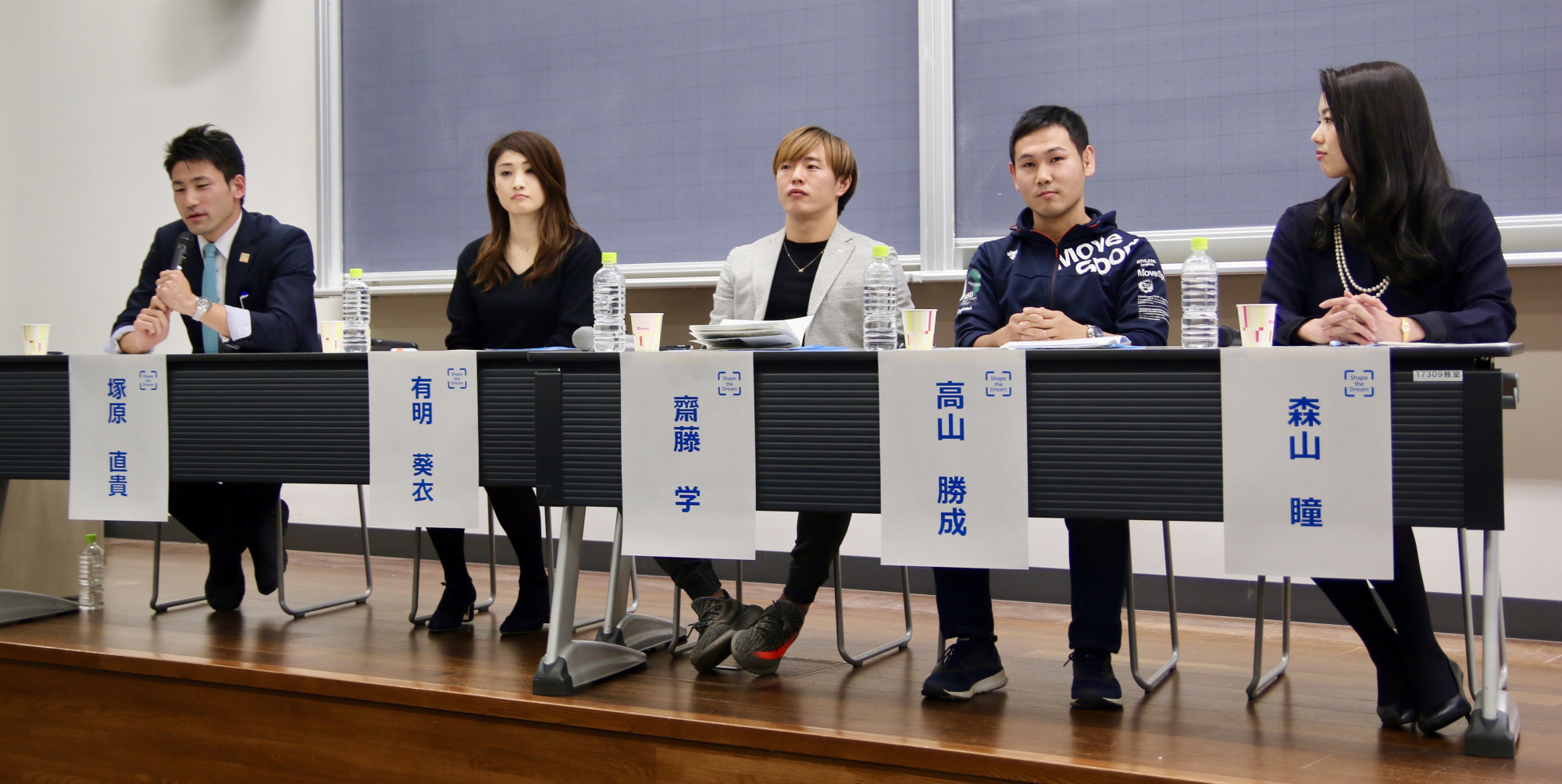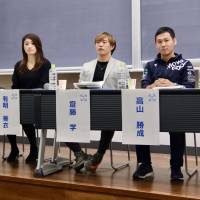When Eiji Shiraki retired as an American football player for the powerhouse Fujitsu Frontiers of the semi-pro X League three years ago, he was completely bewildered.
Because without his helmet and pads, he felt he did not have any direction for his post-athletic career.
"I started feeling fear because I wasn't sure what kind of values I have (as a corporate employee)," the 33-year-old Shiraki said at a symposium organized by his nonprofit organization, called "Shape the Dream," at Aoyama Gakuin University last Friday.
Shiraki founded Shape the Dream earlier this year to help young athletes, including student-athletes, envision their present and post-athletic careers.
The organization's main purpose is to insist young athletes consider their post-competition careers and make them realize they have career options other than becoming coaches and team officials.
Shiraki is not alone in worrying about his post-athletic career.
Many others, including those who came to the symposium as auditors, have anxiety about their career after retirement.
The feeling isn't limited to athletes in minor sports.
Even those who compete in Japan's premier professional leagues, Nippon Professional Baseball and soccer's J. League, are not guaranteed second careers after they hang up their gloves and cleats.
In fact, the likes of Kazuyoshi Miura and Ichiro Suzuki, who are still competing at age 50 and 44, respectively, are extremely rare cases. NPB players exit the diamond aged about 29 on average, while J. League players quit at about 25.
According to data introduced by Shiraki, roughly half of the athletes in high school and universities hope to continue to be associated with sports even after they are done as athletes.
But obviously not all of them are able to have their wishes granted. Many have to find jobs at companies unrelated to sports.
"Athletes should not just focus on athletics," Shiraki said. "The options for them should not be narrowed down."
The majority of the symposium was occupied with a panel discussion involving several active and retired athletes — former sprinter Naoki Tsukahara, former boxing champion Katsunari Takayama, Yokohama F. Marinos midfielder Manabu Saito, ex-Women's Japan Basketball League guard Aoi Ariake and former national lifesaving champion Hitomi Moriyama.
The panelists discussed their own cases and how they were planning for their post-athletic careers.
One of the issues that is often talked about in Japanese junior and youth sports is a perceived short-sighted, winning-is-everything culture.
Ariake, who retired in 2015 and now works as a company employee, said that when she was a student-athlete, many players would bypass universities and go to the league directly out of high school.
"When I was in high school, it was said that your improvement stops if you go to a university and it's better to go to the league right out of high school," said Ariake, who went to the University of Tsukuba, before she joined the Fujitsu Red Wave, seeking a future career in teaching.
Moriyama, who is also working as a company employee now, insisted that student-athletes tend to concentrate on their sporting activities but should be aware of their long-term future career plans.
Moriyama said that student-athletes care only about their athletic performance when they are in school, but making an academic effort gives them more career options.
She said that student-athletes "should be studying," because if they can do both athletics and academics it gives them more confidence for their post-athletic careers.



















With your current subscription plan you can comment on stories. However, before writing your first comment, please create a display name in the Profile section of your subscriber account page.